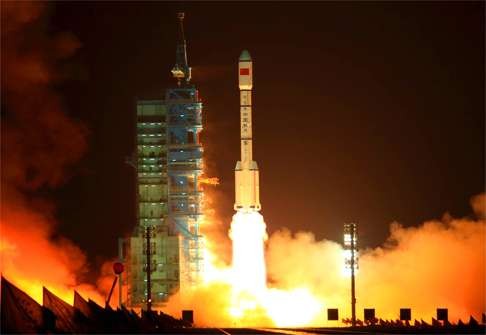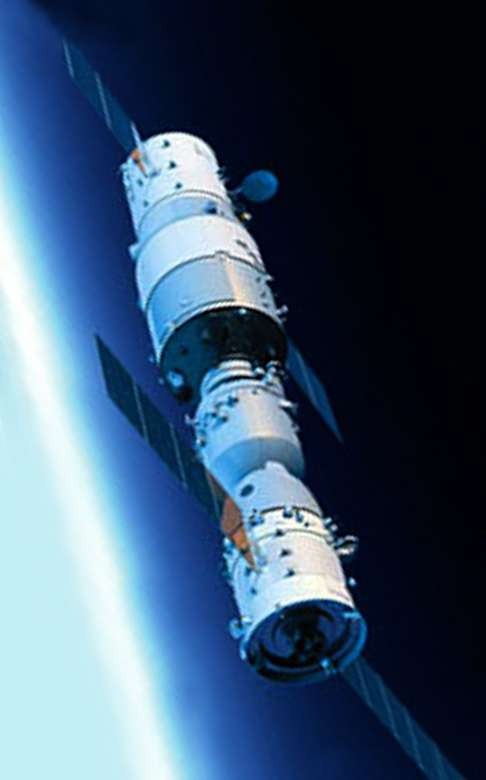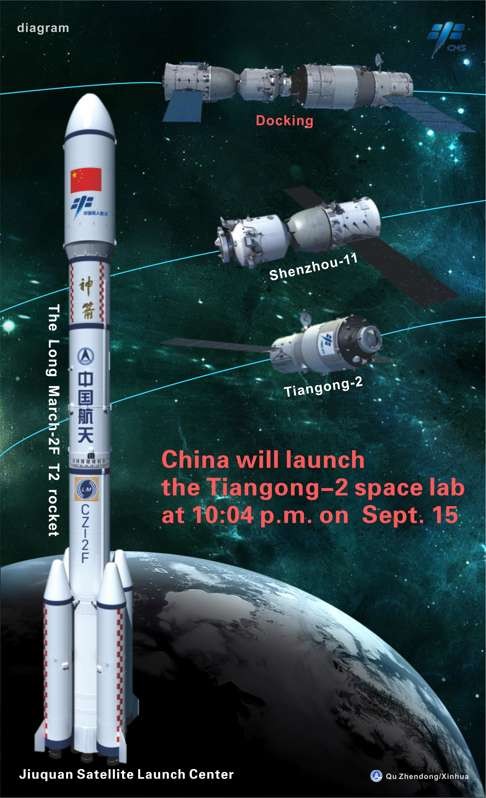
Five facts about China’s Tiangong 2 space lab as nation counts down to its launch tonight
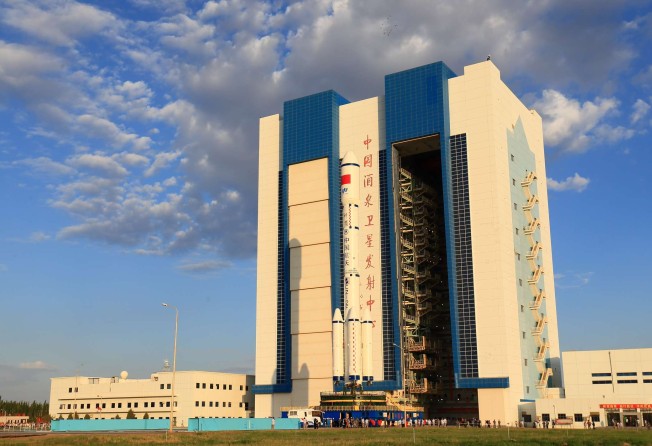
China’s Tiangong 2 – the country’s second experimental space laboratory – will be launched on Thursday night.
The space lab, set for launch just after 10pm, will support China’s longest manned space mission as Beijing steps up competition in the global space race.
We fill you in on the details about the Tiangong 2.
The Tiangong 2 is being launched on the evening of the Mid-Autumn Festival
The space lab will be launched from the Jiuquan Satellite Launch Centre in the Gobi Desert.
China has invited scientists from Germany, France, Italy, Russia, Pakistan and the European Space Agency to watch the launch on the site in Inner Mongolia.
On Wednesday afternoon, propellant was injected into the Long March 2F carrier rocket, which will send the lab into space.
The rocket is now sitting in the middle of the 105.52-metre launch tower. The public will get full view of the rocket after the structures around it are removed at 9.30pm, according to state media.
The Tiangong 2 bears a similar appearance than its predecessor Tiangong 1, which was launched in 2011.
Tiangong 2 will dock with the Shenzhou 11 spacecraft next month
The Shenzhou 11 spacecraft will carry two astronauts into space in mid-to-late October and dock with the lab.
The docking will take place in an orbit at an altitude of 393km, where China’s planned space station will be running. Chinese spacecraft previously carried out docking in a 343-km orbit.
Before next month’s docking, scientists will test the Tiangong 2’s energy and communication systems to prepare it for hosting astronauts. The lab will also carry out several space experiments.
Astronauts will spend 30 days in Tiangong 2 on China’s longest manned mission
After a three-day trip in the Shenzhou 11 spacecraft, two astronauts will live in the space lab for a month.
The Tiangong 2, who is equipped with exercise and entertainment facilities, provides a comfortable environment for the astronauts.
It will be China’s longest manned mission since the Shenzhou 10’s 15-day mission in 2013.
More than 40 studies will be conducted in the space lab, including space medical research, new material development and fundamental physics studies. Astronauts will also run technical tests related to building and operating a space station.
One project, developed in collaboration with French scientists, will study the human cardiovascular functions in weightless condition.
The Tiangong 2 will release a nanosatellite to support its operation and take photos of the lab and the spacecraft.
Astronauts will run experiments designed by secondary school students in Hong Kong
The astronauts will conduct studies based on three award-winning space-science projects from a 2015 competition at Hong Kong secondary schools.
The top project, from pupils at Shun Tak Fraternal Association Yung Yau College, studies porous membranes in zero gravity, according to the Productivity Council, which sponsored the contest.
An experiment designed at Christian and Missionary Alliance Sun Kei Secondary School will look at how silkworms transform in the environment of space, and a team at Po Leung Kuk Laws Foundation College designed a study on the oscillation of a double pendulum.
The astronauts will film the procedure and send the footage back to earth.
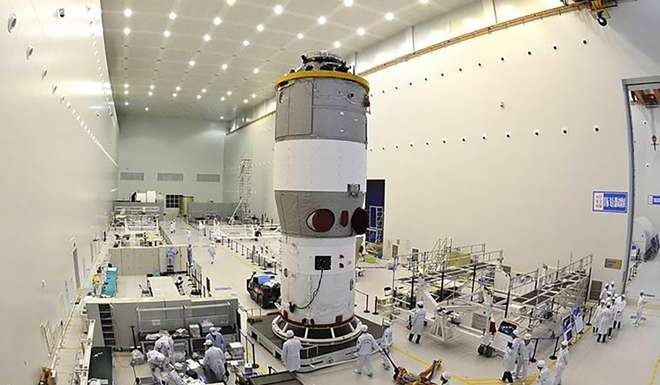
The Tiangong 2 will carry the world’s most accurate clock
The lab is equipped with 14 space instruments including the world’s accurate time piece.
The Cold Atomic Clock in Space (Cacs) recently developed by researchers in Shanghai can easily be lifted by two people and would fit comfortably in the boot of a car.
It would lose only a second in one billion years – more accurate than the present champion clock from the United States, which loses a second in 300 million years.
Another instrument, the Gamma-ray Burst Polarimeter (Polar), developed in collaboration with the European Space Agency, is capable of studying the most powerful explosions in the universe. And remote sensing devices in the lab are expected to support China’s climate change research.
